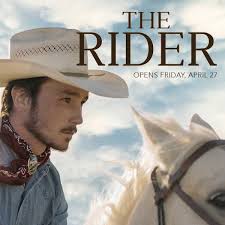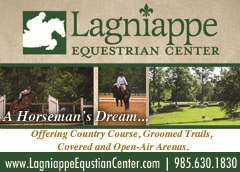By Barbara Newtown.
Saddle bronc competitor Brady Blackburn, skull crushed by a hoof and repaired with a metal plate, checks himself out of the hospital against medical advice. He walks home to the trailer he shares with his widower father and his sister, Lilly, on the Pine Ridge Reservation in South Dakota. His father’s lust for drink and video poker adds to Brady’s misery: their ramshackle horse operation is on the way down, and the only way up seems to lie in selling off the stock.
Battling headaches, depression, and partial seizures in his right hand, Brady finds solace in his ability to communicate with horses. He knows that another bad fall will result in even more severe brain damage, but he still struggles to let go of the idea that excelling in the rodeo arena will give him a livelihood and prove his worth. Training horses requires tact, consistency, and respect; as Brady has more and more success with “problem” horses, he begins to realize a new definition of what it means to be a cowboy… and a man.
Writer/director Chloe Zhao met Brady Jandreau, the untrained star of the film, when she was working on another film on the Pine Ridge Reservation, Songs My Brothers Taught Me [2015]. When the real Brady suffered a head injury during a saddle bronc competition and slowly began to put his life back together, she asked if she could tell his story—with him in the lead. Jandreau’s own father, sister, wife, and friends acted in the film. Jandreau has said that 40% of the film is true, and the rest is tweaked for dramatic effect. In real life, Brady’s mom is very much alive, and Brady and his father amicably run Jandreau Performance Horses. They breed and train American Quarter Horses in the Western disciplines. Brady says he wouldn’t mind doing some more film acting.
The performances that Zhao brings out of her Pine Ridge amateurs are magical. A movie that could have been a simple tale of giving up a dangerous dream instead turns into a meditation on friendship, love of family, and the miracle of communication between species.
The heartbreaking scenes of Brady visiting his disabled friend Lane Scott in rehab are part of the emotional center of the film. Brady holds the “horse” end of a pair of reins and Lane, with his motor deficits, tries to hold on. Brady says, “Now whoa… now back up… now let go!” and Lane grins in delight. Lane never shows self-pity; he loves hearing about Brady’s adventures with horses and he loves watching videos of his own rides, when he was a cocky, glorious rodeo star. Lane Scott plays himself. In real life, Lane isn’t confined to a wheel chair, but his vibrating body and his inability to speak are true. Brady Jandreau points out in interviews that Lane was injured in a car crash, not a rodeo.
The other emotional center of the film is the sweet, loving brother/sister duo of Brady and Lilly. In the film and in real life, Lilly is on the autism spectrum. She is a happy young lady who sings her way through the day and who doesn’t want to be 15 years old if it means having to wear a bra. One of the funniest moments occurs when the audience realizes she’s attacking her brand-new bra with scissors – as she sings.
The shots of Brady Jandreau working with horses are as realistic as is possible in a film. The horse playing the role of Apollo is truly spoiled; we see Brady trying to get the horse to pay attention without getting either person or animal hurt. The balance between kindness and firmness is so clear that non-horse people can understand what Brady Blackburn/Jandreau is trying to accomplish. Zhao uses long takes to good effect: you can appreciate that training is a lengthy process. Nevertheless, an uncut version of elementary horse training would take 90 days! Zhao has found a good balance.
The Pine Ridge scenery qualifies as a character in The Rider. Zhao credits the influence of Terence Malick’s Days of Heaven [1978] and the films of Werner Herzog for the brooding, expansive feel of the unspoiled West that she and her cinematographer capture. Endless vistas are broken by the raw upthrusts of the Badlands, by distant lightning and by looming black clouds. The grass is sparse, but the horizon is so far away that the horses are in heaven.
Zhao was born in Beijing. Fascinated by American culture, she finished high school in Los Angeles and majored in political science at Mount Holyoke College. After graduation she held odd jobs in real estate, party promotion, and bartending. She studied film production at the New York University Tisch School of the Arts. Like The Rider, her first full-length film Songs My Brothers Taught Me also employed Pine Ridge amateurs. In an interview Zhao estimated that 80% of that film was drawn from the real-life relationships she encountered there. “We’re capturing truth – because truth is the only thing we can afford.” May she continue to blend the best of fiction and documentary. What makes her method of turning people’s lives into artistic expression is the permission and trust that her performers give to her.
The Rider is rated R for tense, emotional moments and frequent use of the F-word. That said… I would not hesitate to let a young teen watch the film. It is sensitive in its treatment of disability, inspiring in its portrayal of the West, knowledgeable in its exploration of the love for horses, and heartwarming in its scenes of friendship.





